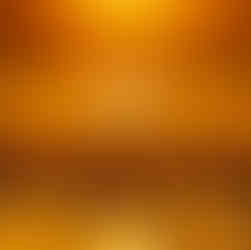From Bayou to Bosque with the Tamron 50-400mm f/4.5-6.3 Di III VC VXD lens
- Ian Plant
- Dec 23, 2022
- 7 min read
This is a "general impressions" review of the Tamron 50-400mm f/4.5-6.3 Di III VC VXD lens for Sony E-mount mirrorless cameras. In this review, pro photographer Ian Plant offers his assessment of the Tamron 50-400mm lens for wildlife and landscape photography applications.

During the past few months, I've had a chance to use Tamron's 50-400mm f/4.5-6.3 Di III VC VXD lens for Sony E-mount cameras to photograph a variety of nature subjects. I spent two weeks using this lens in the Big Cypress Bayou of Texas to photograph autumn color, and another two weeks photographing birds and other wildlife in Bosque del Apache National Wildlife Refuge in New Mexico.

What this review covers and what it doesn't
This isn't a hardcore lens test. Rather, this review covers my general impressions of the lens after several weeks of use. I don't have the equipment to perform MTF tests or anything like that. What I will provide in this review is my professional opinion about how this lens performs compared to other lenses I have used. Also, I will discuss how this lens can be used to its fullest advantage. Finally, I will discuss what makes this lens different from other lenses, and how it can expand your artistic opportunities. I'm mostly focused on the creative aspects of using this lens, but I will offer my technical observations to give you a more complete picture.

Financial disclosure
I've worked with Tamron as a brand partner for many years and they've paid me for various projects, articles, assignments, and other things during that time. That said, this is a completely independent review without direct compensation from the manufacturer. We are committed to 100% transparency regarding financial relationships with equipment providers and brand partners, and we strive at all times to ensure that reviews are independent, honest, and free of bias.
Sony E mount users only
For now, the Tamron 50-400mm lens is available only for Sony E mount mirrorless cameras. It is designed to cover full-frame cameras, but it will also work on APS-C cameras (with the 1.5x crop factor, the lens has an effective range of 75-600mm). The lens weighs about 2.5 pounds, so while it has some heft, it isn't particularly large or heavy, especially compared to other telephoto zooms. The 50-400mm is sold without a tripod collar (the collar is available as an optional accessory), but the lens is very comfortable for hand-held photography.

How the Tamron 50-400mm lens performed in the bayou
I used the lens for two weeks of photography in the cypress swamps of Texas. During the entire trip, I was exploring the bayou by boat, handholding my camera (which is something I almost never do as a landscape photographer). I never switched lenses: the Tamron 50-400mm was perfect for this environment, allowing me to go as wide as I wanted and giving me just enough reach to capture every intimate landscape composition I saw.
The only time I wanted more reach from this lens was when I spotted wildlife. The maximum focal length of 400mm just wasn't enough to get tighter images of skittish birds that wouldn't let me get close. It was perfectly fine, however, if I wanted a wider view to show wildlife subjects within their broader environment.
How the Tamron 50-400mm lens performed in Bosque
Bosque del Apache National Wildlife Refuge in New Mexico is known worldwide for its annual winter gathering of sandhill cranes and snow geese. I brought the Tamron 50-400mm lens with me to see how it would perform for wildlife photography. I think the lens did an adequate job, but I wasn't overwhelmed by its performance for serious wildlife photography. I found the 400mm maximum focal length to be limiting; the lens was fine for photographs of groups of flying birds or wider environmental portraits of wildlife, but unless my subject got really close, I had difficulty getting tighter shots isolating a single subject.
Other than that, the lens performed extremely well when I was tracking fast-moving subjects. The Sony autofocus is very impressive, and Tamron's fast and quiet VXD focus system doesn't seem to interfere with or impede the camera's autofocus in any significant way. I didn't have any problems tracking subjects and staying locked on. I was even able to track the reflections in water of flying birds! Tamron has done an excellent job optimizing its lenses for the Sony autofocus system, and as a result, almost all of my wildlife images from Bosque were in focus.
Please note that with some of the newer ultra-fast Sony cameras, you won't be able to achieve the maximum burst rate while using any third-party lenses, including the Tamron 50-400mm; so you might be limited, for example, to something like 15fps rather than 30fps.
Who is this lens for?
I think it is fair to say that the Tamron 50-400mm lens is designed to be a general purpose, "all-in-one" zoom. Its wide focal length range makes it suitable for a variety of types of photography. Since I am almost exclusively a nature photographer, I'll keep my observations limited to wildlife and landscape photography.

If you are a wildlife photographer using Sony cameras, I don't think that the Tamron 50-400mm lens would be your first choice, for one simple reason: 400mm as a maximum focal length isn't typically enough when photographing wildlife, especially smaller species. Personally, I'd rather use the bigger brother of this lens, Tamron's 150-500mm (Sony's excellent 200-600mm lens is another great option for serious wildlife photographers). Extra reach allows you to more successfully photograph distant or smaller animals without having to resort to signifiant cropping. If you know you are going to be in a place where the animals are consistently close to you, then the lighter 50-400mm might be a great option, but most of the time, its shorter reach will be limiting for wildlife photography. Of course, you can use the 50-400mm lens on a cropped-sensor camera, which extends your reach, so this might be a great wildlife option for such users, giving you good reach in a relatively lightweight package for less money. But for full-frame camera users, you'll likely be cropping your photos to get tight framing of wildlife subjects.

For landscapes, I think the Tamron 50-400mm is a great choice, especially if you do a lot of intimate photography. I found the optical performance of this lens to be excellent when stopped down a few stops, which is typical with landscape photography to extend depth of field. Its wide focal length range easily gives you the option to pluck out very distant or discreet parts of the landscape. I can imagine pairing this with a wide-angle zoom, and only carrying two lenses to cover all of your landscape photography needs. For me, there is a sizable gap in the middle between my wide zoom's longest focal length (24mm) and 50mm, but I tend not to compose in the middle focal lengths that much anyways, and for others the gap might not be quite as large depending on their wide-angle zoom lens of choice. Personally, I'd avoid carrying a third lens just to plug that hole, but others might not feel the same way.

Excellent focal length range
Despite its shortcomings on the long end, the Tamron 50-400mm does offer a very flexible zoom range, offering wider options than is typical for telephoto zooms. Especially when I was in the bayou, being able to zoom out to its wider focal lengths was incredibly useful.

Image stabilization
The 50-400mm lens has Tamron's Vibration Compensation (VC). The lens stabilization augments the Sony stabilization built into the camera body. I didn't test the extreme bounds of camera/lens image stabilization, although I routinely got sharp images handheld at shutter speeds as slow as 1/80th to 1/100th second, even at 400mm. The lens is light enough for steady handholding for most people, and I suspect I could have gotten away with even slower shutter speeds.

Optical performance
The MTF charts Tamron supplies for the 50-400mm look very impressive, but does the lens really perform this well in real-world settings? Overall, I found the lens to have very good resolution, but it was a bit softer when shot wide-open at longer focal lengths. I didn't conduct any rigorous resolution tests, but I personally feel that my Tamron 150-500mm is somewhat sharper wide open. Optical resolution for the 50-400mm lens improves when stopping down from wide-open, definitely crossing over into the "excellent" range by f/8 or f/11. The lens shows little chromatic aberration, but there is noticeable distortion and vignetting. Both are easily fixed in Adobe Lightroom or Camera Raw by applying the lens profile, although I feel that the vignetting correction is too strong, and I usually pull back on the correction some to keep the edges and
corners of the image from going too bright.

I like to shoot into the sun for a lot of my landscape and wildlife photography, and although I didn't really do any rigorous, controlled testing, I shot enough into the light with the Tamron 50-400mm to form some subjective impressions. Flare seems fairly well-controlled. Sunstars look good, but not great with this lens; this isn't surprising, as sunstars typically look better with wider angle lenses. Here are a few examples where I shot towards the light or directly into the sun with the Tamron 50-400mm lens:
Price
The Tamron 50-400mm lens comes in at just under $1300, which is a great price for such a high quality, versatile lens.
Conclusion
The Tamron 50-400mm is a really good lens for Sony users, and it is a great choice for many types of photographers. For me, I find it less useful for wildlife than the Tamron 150-500mm. And although the 50-400mm is an interesting lens, I don't think it is quite the game-changer that the Tamron 35-150mm lens is. That said, the 50-400mm is a solid performer, and its versatile zoom range could easily cover all of your telephoto needs for intimate landscape photography.
About the author
Whether hanging over the rim of an active volcano, braving the elements to photograph critically-endangered species, or trekking deep into the wilderness to places most people will never see, world-renowned professional photographer Ian Plant travels the globe seeking out amazing places and subjects in his never-ending quest to capture the beauty of our world with his camera. Known for his inspiring images and single-minded dedication to creating the perfect photo, Ian has reached hundreds of thousands of people around the world in his mission to inspire and educate others in the art of photography. Ian is a frequent contributor to many leading photo magazines, the author of numerous books and instructional videos, and founder of Photo Masters.



























.jpg)


